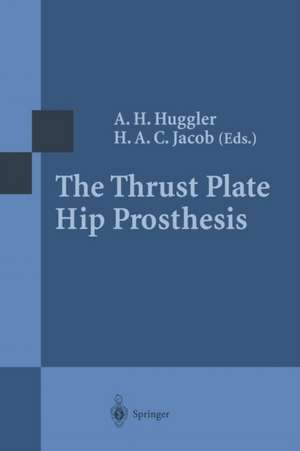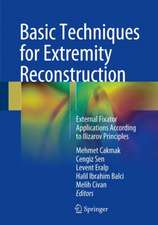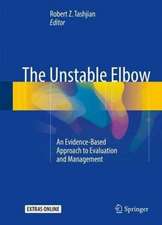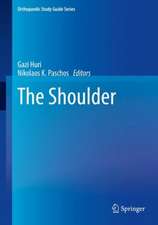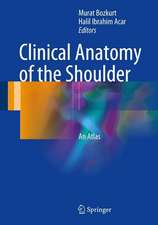The Thrust Plate Hip Prosthesis
Editat de A. H. Huggler, Hilaire A. C. Jacoben Limba Engleză Paperback – 18 sep 2011
Preț: 361.60 lei
Preț vechi: 380.63 lei
-5% Nou
Puncte Express: 542
Preț estimativ în valută:
69.19€ • 72.44$ • 57.25£
69.19€ • 72.44$ • 57.25£
Carte tipărită la comandă
Livrare economică 07-21 aprilie
Preluare comenzi: 021 569.72.76
Specificații
ISBN-13: 9783642644337
ISBN-10: 3642644333
Pagini: 164
Ilustrații: XII, 148 p. 7 illus. in color.
Dimensiuni: 155 x 235 x 9 mm
Greutate: 0.24 kg
Ediția:Softcover reprint of the original 1st ed. 1997
Editura: Springer Berlin, Heidelberg
Colecția Springer
Locul publicării:Berlin, Heidelberg, Germany
ISBN-10: 3642644333
Pagini: 164
Ilustrații: XII, 148 p. 7 illus. in color.
Dimensiuni: 155 x 235 x 9 mm
Greutate: 0.24 kg
Ediția:Softcover reprint of the original 1st ed. 1997
Editura: Springer Berlin, Heidelberg
Colecția Springer
Locul publicării:Berlin, Heidelberg, Germany
Public țintă
Professional/practitionerCuprins
1 The Thrust Plate Prosthesis: A New Experience in Hip Surgery.- 2 Biomechanical Principles and Design Details of the Thrust Plate Prosthesis.- 3 Finite Element Investigations of the Proximal Femur After Implantation of the Thrust Plate Prosthesis Compared with Findings in a Post-mortem Histological Specimen and in Radiological Follow-Up Examinations.- 4 Histology of the Thrust Plate—Bone Interface.- 5 The First-Generation Thrust Plate Prosthesis: Long-Term Results of a Clinical Pilot Study of 20 Cases.- 6 The Second-Generation Thrust Plate Prosthesis from 1988 to 1992.- 7 Special Indications and Complications with the Implantation of the Thrust Plate Prosthesis.- 8 Bone Remodelling of the Proximal Femur After Implantation of a Thrust Plate Prosthesis.- 9 The Thrust Plate Prosthesis in Osteological Disorders.- 10 The Limits of Indications for the Thrust Plate Prosthesis.- 11 Our Experience with the Thrust Plate Prosthesis.- 12 Chemical Reactions at Titanium Surfaces.- 13 Material Combinations with Polyethylene and Metasul for Articulating Implants.
Textul de pe ultima copertă
The thrust plate prosthesis is a new type of hip prosthesis which maintains the physiological loading pattern of the bone. Experimental stress analysis of the proximal femur led to the development of this device, and clinical results over a period of more than 12 years confirm the sound biomechanical concept on which it is based. Conventional prostheses of the stem type are still prone to loosening and subsequent revision operations which are surgically particularly demanding. The thrust plate prosthesis, in contrast, allows a revision procedure, if at all necessary, to be performed with the same ease as a primary implantation. This, together with the fact that bone stock is preserved, makes it especially attractive for use in physiologically active and young patients. More than 150 figures, 16 of which are in colour, illustrate details in the development of the device and the clinical observations made by a group of participants in a pilot study. This book introduces the thrust plate prosthesis in detail to the hip surgeon. It is an accurate account of the long and laborious effort involved in realizing a project that was born out of critical observations.
